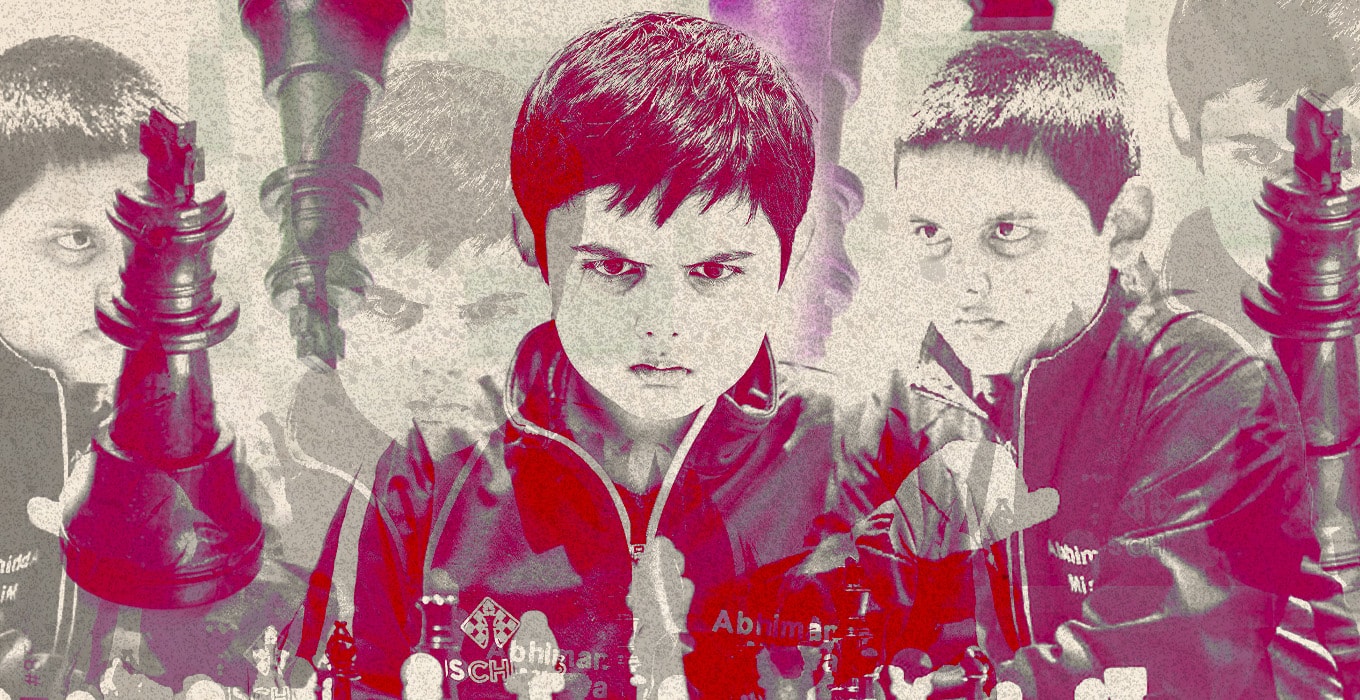“Chess has generally been a man’s game and thus more men start playing chess – so the numbers are much greater. I think the chess community could be better at including girls and women in chess. Because sometimes for a very young girl, it’s not the easiest community to get into.”
(Magnus Carlsen, #AskMagnus)
Physician, heal thyself
Welcome to our first science blog post of 2022, and to FIDE’s Year of Women in Chess. I’d like to use this post to signal our support for FIDE’s initiative (if not, necessarily, their chosen sponsor), and to introduce a Chessable study aimed at shedding more light on a phenomenon that everyone involved in the game is surely aware of – our massive gender gap. This gap is manifest at the level both of participation (the numbers of girls and women playing relative to boys and men), and also – at the top levels at least – performance (reflected in the fact that over the past fifty years, only three women have broken into the top 100 on FIDE’s Open lists – Maya Chiburdanidze, Judit Polgar and Hou Yifan). More on this statistically contested high-performance gap shortly.
For the purposes of full disclosure, it’s worth mentioning that at both of the above levels there is some institutional self-interest at stake here: our Chessable userbase presently is overwhelmingly male, perhaps even more than might be expected in the chess world generally. And though in our drive towards a truly inclusive appointment policy we have been successful in recruiting large numbers of highly skilled and creative women to various roles within our company, we also have some way still to go in ensuring that we have this diversity reflected in senior roles within Chessable and the Play Magnus Group, and in the authorship of our courses. We intend to learn from this study, as well as to make its fruits accessible to other stakeholders – not least FIDE.
Still or stormy waters?
Typically, the subject of the gender gap in chess excites indifference in some, but very strong feelings in others. I’d hazard the suggestion that those of us who are indifferent to the issue perhaps benefit in some way from the status quo, or at least see no good reason to change it. As the Pulitzer-winning writer Upton Sinclair memorably observed, it’s very difficult to get someone to understand something, when their salary depends on their not understanding it.
At the other end of the engagement continuum, it is possible, even likely, that those with strong feelings on the subject have had these feelings excited by perceptions or experiences of discrimination or injustice. We hope to attract a wide range of inputs from all positions on this continuum, however contradictory or opposed these may be, and to analyse these impartially, using sound methodological processes.
What has science contributed to the debate to date?
Whilst there are some left-field explanations for the chess gender gap (eg untestable and frankly odd Freudian explanations advanced by people like Reuben Fine and Bill Hartston, long since refuted via quotidian logic by the likes of Cathy Forbes – see https://www.facebook.com/groups/britishchess/permalink/3243470999205936/), up to this point it has been possible to discern an alignment of the statistical evidence alongside two seemingly contradictory theories – one in which the available data are harnessed to support a hypothesis that almost all the perceived differences in performance can be attributed to differences in participation, and the other drawing on a theory of alleged neurological differences, in which the available data are seen to support a hypothesis that male brains are better suited to the game of chess (with both participation and performance thought to be explained by these neuro-biological differences).
The first of these theories has come to be known as ‘the participation rate hypothesis’, and it is argued in such papers as Charness & Gerchak (1996), Chabris & Glickman (2006), Bilalic et al (2009), and in an article on Chessbase by Wei Ji Ma (2020). The argument has been critiqued for perceived methodological or logical flaws (eg Knapp, 2010 and Weisend, 2019), but it has nonetheless proved deeply influential in the chess community and seems to have the support of big hitters like our current world champion – as revealed by his answers to questions on the subject in interviews, including during his recent match against Nepomniachtchi.
The second theory has been argued most prominently by the Australian psychologist Robert Howard (2014), and has famously attracted some high profile support – eg historically from Bobby Fischer, in some jaw-droppingly misogynistic clips still available to view online, and in (relatively) more muted and certainly more recent fashion from the grandmaster, serial provocateur and FIDE Vice-President, Nigel Short. Gary Kasparov seems to have held these views in the past, though these have moderated considerably over time – a process perhaps prompted by his first encounters with Judit Polgar. (We are reminded of a former heavyweight boxer’s remark that ‘Everyone has a plan [or theory?] until I hit them in the face’.)
What’s the evidence for male versus female brains?
The support for the neuro-biological theory leans in part on statistical analyses, but very heavily on research suggesting likely gender-based differences in certain (very particular) aspects of cognitive functioning – eg for male advantage in visuo-spatial tasks, especially mental rotation (e.g. Fernandez-Baizan et al, 2019; Voyer et al, 2017) and on endocrinal/hormonal differences between the sexes. But overwhelmingly it relies on opinion, ‘common sense’ and naturalistic ‘observation’, and is largely dismissive of the prevailing evidence from meta-studies that there tend to be greater intellectual differences evident within gender groupings than between them (e.g. Gill, 2013; Hattie, 2009). Here’s the actor, writer and TV personality Stephen’s Fry fairly typical, contestable and by no means especially illuminating synthesis, which he uses to explain male dominance of the game, and in which he even offers an unreferenced insight into the game’s origins!:
“Over and above the advanced sense of spatial dynamics and transformational geometry which is revealed by scientific experiment to be better developed in men than women, chess calls for supernatural qualities of competitiveness and aggression – it was men, after all, who invented the game.” (Fry, 1992, pp.137-8)
Promising new directions
Whilst neuro-biological explanations for the participation- and (in their terms) performance-gap in chess don’t, by definition, range into the domain of socio-cultural practices, the same can’t be said for those who subscribe to the currently dominant participation rate hypothesis. Though this account does not in itself have much to say about the reasons for the participation gap, several suggestions have been made, ranging from the relative absence of positive role models and the behavioural manifestations of a male-dominated environment (including discriminatory language use), to the phenomenon of stereotype threat.
It seems to me that even without needing to enter the rabbit warren of neurobiology and gender, recent scientific developments outside the chess world could inform our future understandings within it. I am personally very interested in the work of researchers like Leslie and Cimpian, who have studied the effects of field-specific beliefs – e.g. the more a field is believed to require raw brilliance, the fewer the women to be found in it (Meyer et al, 2015). Though chess itself doesn’t form a central plank in their argument (fields like philosophy and certain STEM subjects do), what field is more consumed by notions of brilliance and ‘natural talent’ than chess? And if it is widely believed that men tend to possess more ability in chess than women – whether there is substance to this belief or not – then women will be discouraged from entering into the field, contributing to the known participation (and future high performance) gender gap. Self-fulfilling prophecy in action.
A counter to this argument could be the observation that this participation gap is less apparent pre-adolescence, at which point there seems to be a steep fall-off in girls’ continued engagement in the game (ie. even more than for boys). Why would the perception of chess as a game for naturally brilliant boys and men become apparent only at that stage, not before? Here too, there are plausible hypotheses to consider. Bian et al have found that stereotypes are endorsed by, and influence the interests of, children as young as six. Specifically, six-year-old girls are less likely than boys to believe that members of their gender are “really, really smart.” Also at age six, girls begin to avoid activities said to be for children who are “really, really smart.” These findings suggest that gendered notions of brilliance are acquired early and have a profound effect on children’s interests (Bian et al, 2017). Even for those girls who persist with the game during their primary school years (where chess provision is often offered to whole classes), field specific beliefs and prejudices may still be incubating, leading to drop-offs at the point where continued engagement becomes more strongly led by volitional choices rather than curriculum offer.
The Chessable-Durham gender-gap study
All the above is intended merely as a prologue to the real substance of this blogpost. In combination with a freelance researcher affiliated to Durham University in the UK, we are beginning the new calendar year with a research study that will, we hope, generate new insights and ideas for combating the participation and (in due course) performance gap in chess. It consists of two phases. In the first phase, we invite all Chessable users aged over 14 to share their views and hunches with us, as we get an empirical handle on the grounded experiences of chessplayers, of all genders. The second phase involves a much more finely-grained deep delve into the hypotheses generated in Phase 1. This will be undertaken via individual and focus group interviews. We know that even interviews that aren’t specifically aimed at exploring chess and gender can throw up devastating insights. When we interviewed Harriet Hunt, the strongest ever English woman player (since Vera Menchik at least) for our book on chess improvement, we were struck by her strong views on the subject, based on her own personal experience. Her sense, for instance, that she was often inordinately praised for her strong performances in open junior competitions, as if she was defying the limitations of her gender, and in so doing inadvertently embedding a belief that for girls and boys to compete on equal terms is in some way problematic. We are confident that our users’ collective experiences will result in similarly rich insights, and we thank you in advance for your participation.
To take part in the study, please click on this link:
https://chessable.typeform.com/Genderstudy
I hope you have a wonderful 2022, and let’s do what we can to make FIDE’s Year of Women in Chess a reality.
As ever, I’d welcome feedback in the form of thoughts, questions, challenges, personal reflections etc, as well as theme-suggestions for future science posts. Email me directly via [email protected]
References
Bian, L., Leslie, S. J., & Cimpian, A. (2017). Gender stereotypes about intellectual ability emerge early and influence children’s interests. Science, 355(6323), 389-391.
Bilalic, M., Smallbone, K., McLeod, P. & Gobet, F. (2009). Why are (the best) women so good at chess? Participation rates and gender differences in intellectual domains. Proceedings of the Royal Society B: Biological Sciences. 276, 1161-1165.
Chabris, C. F. & Glickman, M. E. (2006). Sex differences in intellectual performance: analysis of a large cohort of competitive chess players. Psychol. Sci. 17, 1040–1046.
Charness, N. & Gerchak, Y. (1996). Participation rates and maximal performance: A log-linear explanation for group differences, such as Russian and male dominance in chess. Psychol. Sci. 7, 46-51.
Fernandez-Baizan, C., Arias, J.L., & Mendez, M. (2019). Spatial memory in young adults: Gender differences in egocentric and allocentric performance. Behavioural Brain Research, 359: 694–700.
Fry, S. (1992). Paperweight. London: Mandarin Paperbacks.
Gill, J. (2013). Gender influences. In: Hattie, J. and Anderman, E. (eds) International guide to student achievement. New York: Routledge.
Hattie, J. (2009). Visible learning: A synthesis of over 800 meta-analyses relating to achievement. Oxon: Routledge.
Howard, R. W. (2014). Gender differences in intellectual performance persist at the limits of individual capabilities. J. Biosoc. Sci. 46, 386-404.
Knapp, M. (2010). Are participation rates sufficient to explain gender differences in chess performance? Proceedings of the Royal Society B: Biological Sciences. 277, 2269-70.
Ma,Wei Ji, 2020. What gender gap in chess? [online]
https://en.chessbase.com/post/what-gender-gap-in-chess
Meyer. M, Cimpian, A. & Leslie, S.J. (2015). Women are underrepresented in fields where success is believed to require brilliance. Front. Psychol. 6, 235.
Voyer, D., Voyer, S.D. & Saint-Aubin, J. (2017). Sex differences in visual-spatial working memory: A meta-analysis. Psychonomic Bulletin & Review. 24 (2): 307–334.
Weisend, B., (2019). Questioning Gender Studies on Chess. [online]
https://en.chessbase.com/portals/all/2019/05/chess-gender/wiesend_questioning%20gender%20studies%20on%20chess.pdf







